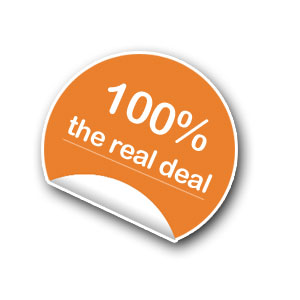A couple days back I read this article on Medianama which shared that Amazon will soon go live in India as a marketplace with Junglee.com, but a tweet today morning announcing that Junglee.com is live caught me by surprise.
Amazon, of course was expected to test waters in India this year but the whole junglee.com gig is away from most people’s anticipation of how it will all unwrap.
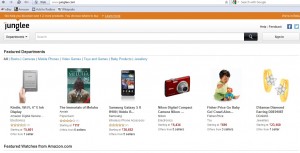
Amazon for the records is the the biggest global e-retail/e-tail giant which posted $17.43bn in revenues in last quarter of 2011 (35% more than the revenue for same quarter in 2010). The company net sales were up 37% compared with 2010.
Amazon is India
There was a lot of speculation particularly for the last six months about Amazon’s entry to India. Amazon as countless sources have shared, already have development centers in India and had started looking for talent for their fulfillment capabilities. As per the current regulations Amazon is not allowed to open an online Multi-brand retail store, and can not make FDI in India except for a single brand retail business, thus Junglee.
Amazon’s Junglee
Here’s how Amazon describes it
“Junglee is an online shopping service by Amazon which enables customers to find and discover products from online and offline retailers in India and from Amazon.com. Junglee organizes massive selection and multiple buying options from hundreds of sellers, and leverages Amazon’s proven technologies and millions of customer reviews to help customers make smart purchase decisions.”
For the uninitiated Junglee is like a Huge Brochure which lists millions of products from thousands of vendors. You choose the product that you want to buy and then go the vendor site or call them to order as explained here
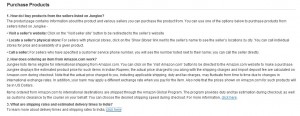
Here’s a look at one of the category(Books) page

Just one book, also I am not sure why am I being shown featured jeans when I categorically chose books. Bugs.
Here’s a sample product page(for Paulo Coelho’s Alchemist)

Amazon apparently relies of it’s own site for Metadata (Product Description for ex) which in some cases can be really screwed up like for the book ‘I Too Had A Love Story’
The product description is picked from http://www.amazon.com/I-Too-Had-Love-Story/dp/8188575704 and is as far from the actual book description as it can be http://www.dialabook.in/books/i-too-had-a-love-story_1_12247.html
Scrolling down further is the review section. Most part of this section comes directly from Amazon.com
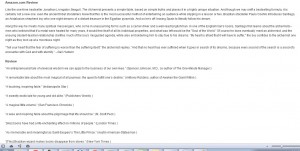
List of Sellers

Junglee.com for now has about 5 sellers for Books which includes names that probably feature towards the middle(and bottom) spots of a list of top 10 online booksellers in India. Almost everything from the list except Flipkart and Infibeam can be expected to list here.
Using Junglee as a Seller: Win Some, Lose Some

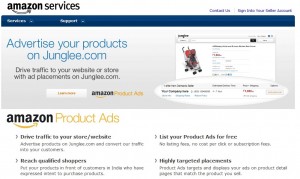
Junglee let’s online and offline retailers to list themselves and their catalogues for free and without any ongoing commission.
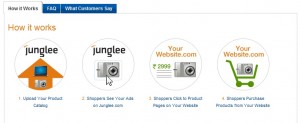

What it means for suppliers (especially small time indies) is that they get a chance to drive traffic and sales from Junglee’s visitors and will convert some customers to direct. Over a period of time as in an online marketplace set up their ratings and reviews will determine how they fare in the long run.
The picture however isn’t all rosy. For established players like Indiaplaza (unless there is some non-compete or alliance agreement) registering on Junglee will give them a temporary boost in terms of both traffic and eventually sales but once Junglee starts running it will break its shackles and given them a run for their money by listing Amazon.in as the default/first choice as a buyer. Once that happens the customers will make the switch to Amazon (in place of a retailer they found a few months back) with the blink of an eye.
(http://services.amazon.in has more details on how to set up ads on Junglee.com)
Using Junglee as a Customer: All Profit No Loss
Junglee.com is another (but branded) shiny object for the scores of people who spend hours daily on the interwebs tweeting or facebooking. They know have one more place to spend time and compare prices. It will be helpful in finding alternative vendors for particular categories and helpful in finding product categories that have been literally out of the online sphere, stuff like Pet Supplies.
Within a span of months you’ll find dozens of people selling Pet Supplies and the likes on Junglee. What this means is that consumers won’t have to wait for their favorite e-commerce site to add some category or a stand alone/vertical service around the category to launch.
What’s up with Amazon?: Junglee is the shortest(and smartest) possible path
To begin their tryst with India Amazon is trying to be the front end(influencer) of the purchase funnel in stead of starting being a back end service provider. It wants Indians to log on to Junglee.com to begin their shopping journey (they can or cannot decide to buy from Amazon) but eventually they’ll make it their in house offers compelling enough to get a huge chunk of the pie.
Here’s how it could unfold for Amazon. Junglee is essentially the market place of Amazon.com abstracted and launched a special business for legal and other reasons. In Amazon.com’s marketplace lot of vendors put their goods on sale and do most of the fulfillment too. Amazon however displays their products and collects the payment from customers (Think Ebay).
What Works Good For Amazon
- Junglee will create an incoming line for new retailers to tie-up. Retailers will flock and list products instead of the company finding them using direct/in-direct modes of advertising or marketing.
- User Data: Millions of people could potentially sign up and start using Junglee to discover new products and vendors. All the user and their shopping history details are now available for scrutiny
- All Junglee’s set up can eventually be replicated for Amazon.in’s market place feature
- A sense of how business works. Deeper/Closer look at how the things work
- Later they’ll start people for accepting payments and maybe coordinating deliveries (Customers buy a third party product from Junglee and Junglee home delivers a product which the third party retailer had in their office and sent to Amazon’s fulfillment center once they get an order). They stand to earn 2-10% commission depending on the product category and services they offer
- Use all the Seller info to tie-up directly for Amazon.in
- Based on user preferences start offering competitive prices and eventually *produce* them domestically
Having said all of that, Junglee is an interesting piece in the Indian e-commerce puzzle and it will definitely have an impact on the existing market leaders. Most Indians from what I understand would give an arm(or probably) a leg to switch to another cheaper vendor especially if it has Made in America tag on it.
What do you think?








